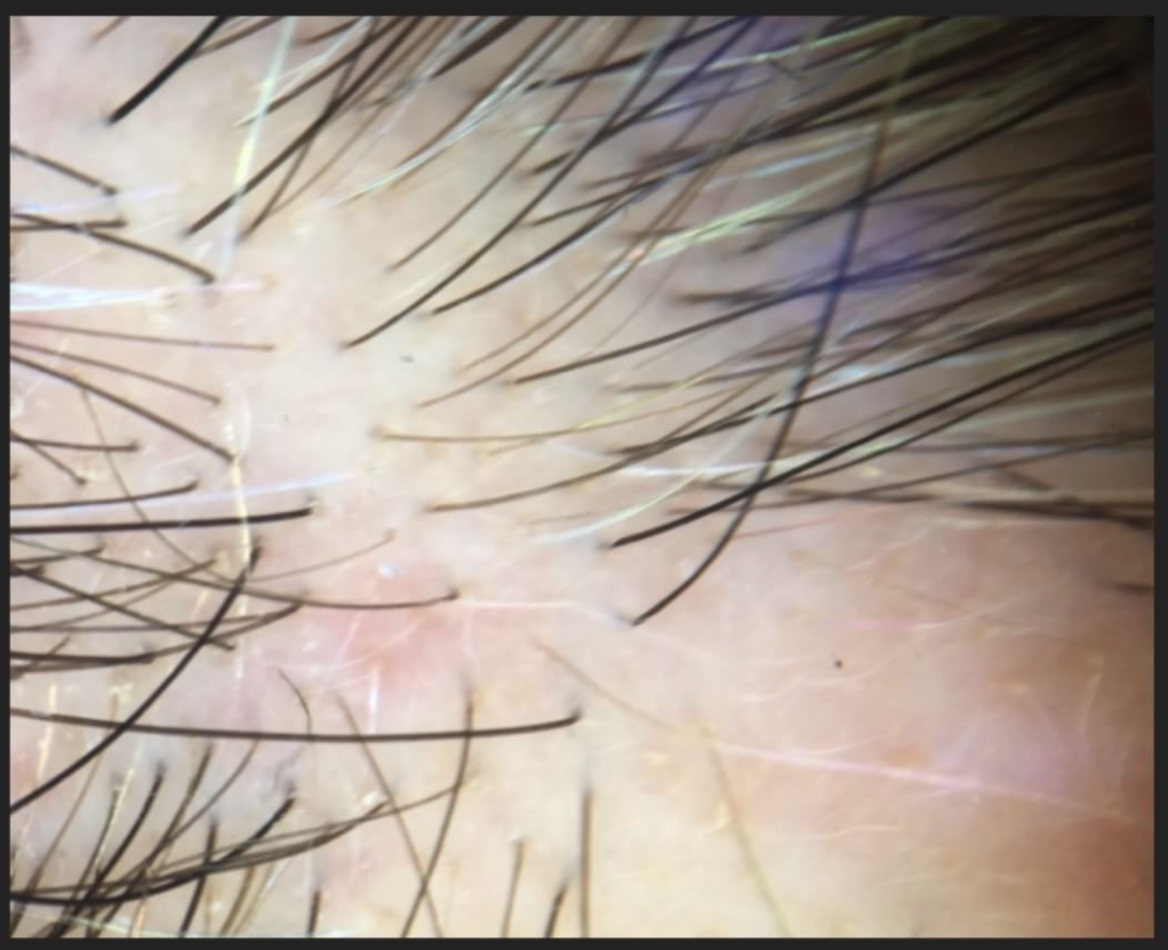Frontal Fibrosing Alopecia: The Early Stages
When FFA First Begins
Frontal fibrosing alopecia (FFA) is a scarring alopecia that affects women to a greater extent than men. The cause remains unknown although hormonal and immune-based mechanisms are clearly relevant.
The disease causes loss of hairs in the frontal hairline, sides and back of scalp, eyelashes, eyebrows and body hair. What is interesting about FFA is that the very earliest stages are associated with destruction of the tiny “vellus” hairs. This destruction leaves behind the thicker terminal hairs.
In the earliest stages of FFA, the hair loss can be completely unnoticeable. There are frequently no symptoms and there is simply a subtle thinning in the area rather than complete loss.
This photo of a patient with FFA shows a relatively normal looking scalp that is easily mistaken for androgenetic alopecia. (In fact this photo could easily be a picture of androgenetic alopecia were it not for the loss of all vellus hairs in this area over a 3 month period). In androgenetic alopecia, there is a gradual (slow!) conversion of thick hairs to thin hairs (a process called miniaturization). In FFA, we often do not see the miniaturized and vellus hairs as they are preferentially destroyed by the immune system. We see mainly single terminal hairs in FFA. Over time (without treatment) there may be some redness that develops in this area and even some scaling. About 40 % of women with FFA have androgenetic alopecia as well, so the two conditions frequently co-exist.
It is often not a decision “is this FFA or AGA ...but rather is it FFA, AGA or both.” The goal of treatment however is to stop that from occurring and the patient was started on topical fluocinonide gel, pimecrolimus cream, steroid injections and oral finasteride.
This article was written by Dr. Jeff Donovan, a Canadian and US board certified dermatologist specializing exclusively in hair loss.

